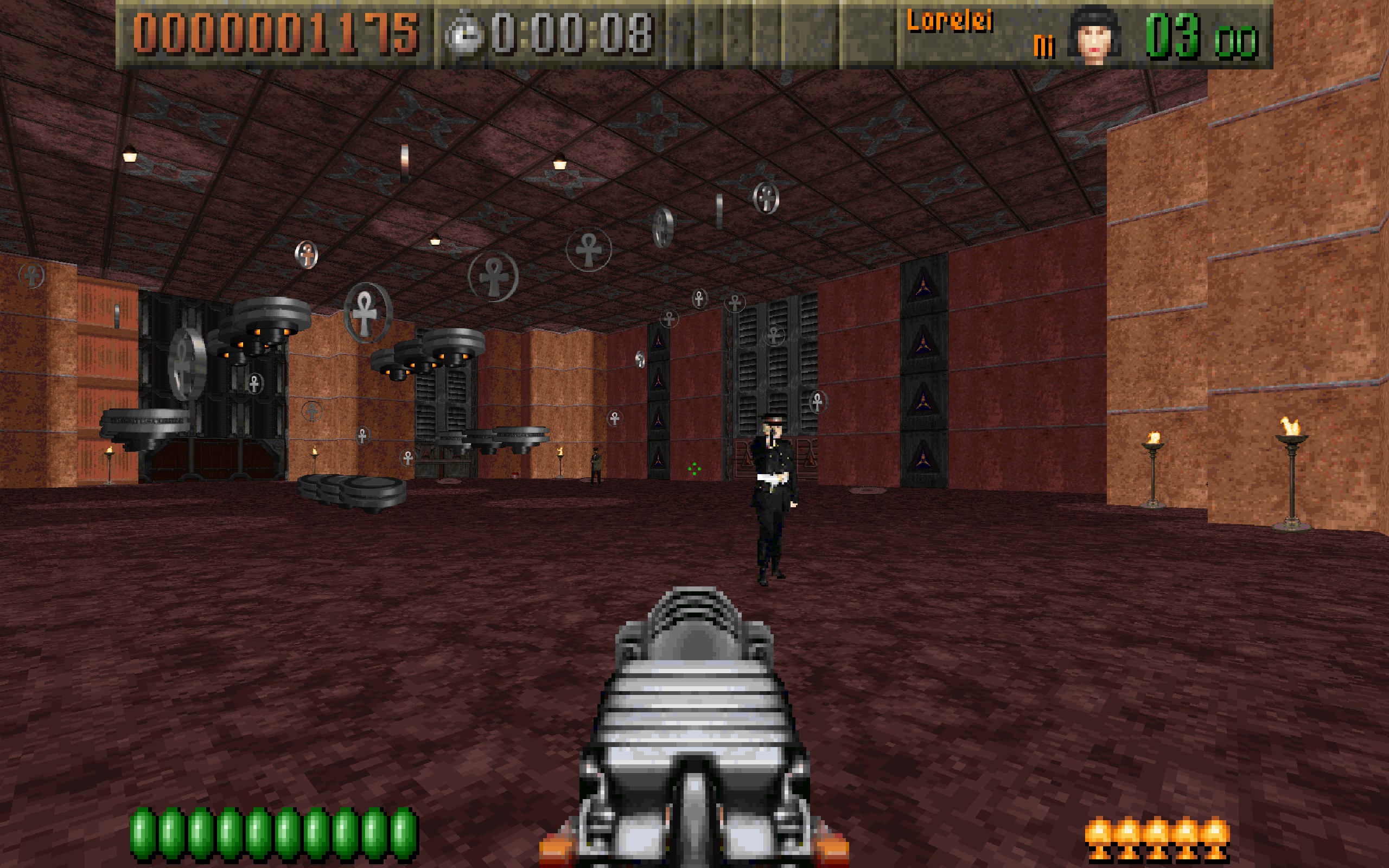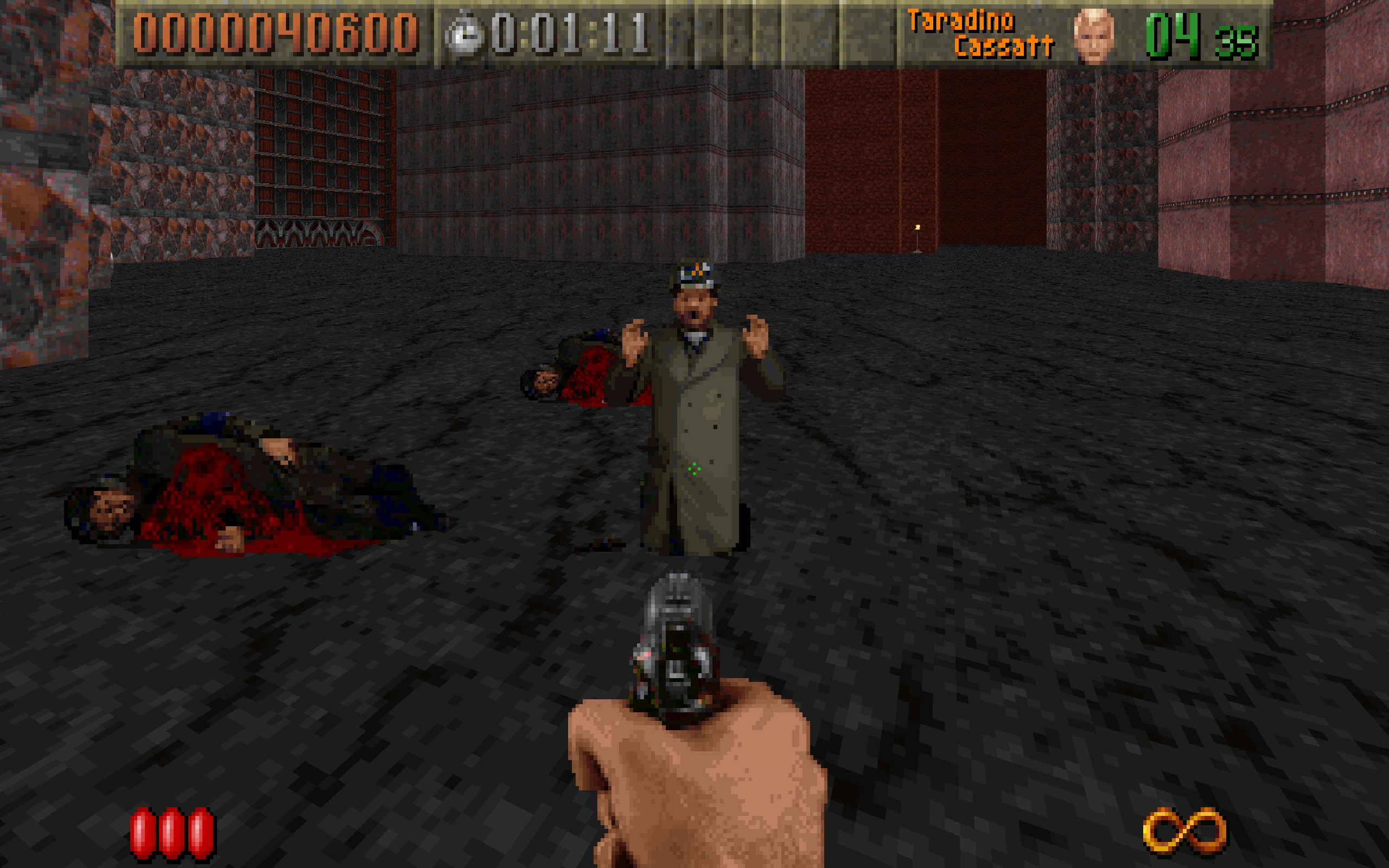Rise of the Triad hasn't aged well but you should still play it
Apogee's bonkers 1995 shooter inhabits an unusual place in FPS history.

I hadn't anticipated how much Rise of the Triad would annoy me in 2023. I loved it in the '90s, and not just because I was a child with low standards. I gather there were adults in the '90s who loved it too. But in 2023? Well, there's a lot that I admire about it, but to actually play it the way it's designed to be played—without cheat codes, I'm guessing—is a novelty that wanes after, oh, 10 minutes or so.
But that's OK. This new Ludicrous Edition is basically a preservation effort on Nightdive Studios' part, and as poorly as it has aged, Rise of the Triad warrants preserving. Its first shareware episode hit in December 1994, almost exactly a year after Doom's shareware debut. It sits on a weird threshold in first-person shooter design history, because while its texture work and enemy design can hold a flame to Doom, it's otherwise heavily limited by the tweaked Wolfenstein 3D engine that makes it tick.

That means each level has a fixed wall elevation and a single floor and ceiling texture. Maps are made from squares plotted onto a grid, so there are no diagonal lines. Level design differs from Wolfenstein and its ilk because while the elevation of all walls in any given level is fixed, the engine does at least allow different elevations on a per level basis. So whereas one level can have towering walls with a gorgeous outdoors skybox, the next can have the cloistered and cavernous vibe of a Wolfenstein level. One cannot lead seamlessly into the other, though.
The levels bear no resemblance to real world spaces, and there is clearly little effort made to try.
It may take a while to clock this limitation because Apogee has some fun ways of hiding it. There are steel platforms, for instance, that vary in elevation (you're basically standing on sprites rather than geometry). There are also circular stair pad sprites that can move vertically and horizontally. There are also, bizarrely, jump pads.
Doom 1993 had acclimatised first-person shooter fans to expect levels to vaguely resemble real places, albeit fantastical ones. Doom E1M1 did kinda resemble a hangar. E1M2 felt like a nuclear plant with some suspension of disbelief. This wasn't always true—a lot of Doom levels make no sense at all—but id Software had the power to make stairwells, adjust lighting on a fairly granular level, and create semi-lifelike level furniture out of geometry.
Rise of the Triad has none of those advantages. It results in one of the most inadvertently surrealistic first-person shooters of the 1990s. The levels bear no resemblance to real world spaces, and there is clearly little effort made to try. These are sprawling, byzantine, labyrinthine hellscapes dotted with obstacles (fire guns, floor arrows, crushing walls) and, yes, jump pads.
Most of the time these levels don't even make sense as videogame spaces. They wend and weave meaninglessly, with not a care in the world for any possible internal coherence or elegance. Seen from above, a lot of the maps look like languid classroom doodles. It's extremely easy to get lost while hunting for keys to unlock doors, and while the game is ostensibly set in an island fortress inhabited by dangerous cultists, one does not get island vibes: one gets 3D Maze vibes. Or, weirdly, Commander Keen vibes.
Keep up to date with the most important stories and the best deals, as picked by the PC Gamer team.

The parallels are too fun to ignore: Tom Hall was director of Rise of the Triad and also one of the creators of Commander Keen and Wolfenstein. The level design in both of these was nonsensically labyrinthine too, and did not at all resemble—even slightly!—any real or even possible-to-imagine environment. And that's fine: the tech wasn't really up to it. But in Rise of the Triad this presents itself less as limitation and more as sensibility. In addition to obstacles, moving platforms and jump pads, Rise of the Triad also has an abundance of fairly useless collectibles, rendering the environments even more volatilely cartoon-like.
But the game does not suck. Its arsenal is wide-ranging and impressively bonkers. Its boring hitscan weapons—a pistol, two pistols and an absolutely pissweak MP40—are just there to tide you over until you find one of the many missile weapons including rocket launchers, heat seekers, and—my favourite—the flamewall, which one-shots every enemy in its path. The problem is, in the absence of these missile weapons the gunplay is incredibly weak, and unless you're playing with cheats (I recommend you do) you'll occasionally get caught out without one.

Enemy behaviour is another fun albeit minor advancement. Some baddies can steal your ballistic weapon if you get too close, while others will kneel and beg to be spared (best kill them, because it's a trick). Others play dead waiting to ambush, and there's even a guy who can catch you in a net. Oh, and there are also amusing power-ups, such as one that can turn you into a dog. There are also five playable characters, varying in health pools and run speeds.
Rise of the Triad was actually a Wolfenstein sequel for a while, and if that ended up being its fate then it would have been a huge advancement indeed. And make no mistake: Rise of the Triad felt like a bit of a revelation in 1994, even with Doom breathing down its neck. It was funny, it was weird, and it had ludicrous gibs.
But should you play it in 2023? None but the most patient will make it to the end, especially given the egregiously cryptic boss fights late in the game. My recommendation is to use a cheat code to unlock all weapons and to skate around the maps marvelling at the peculiar scenery. Consider it a museum piece, rather than a game to play from beginning to end. It inhabits a peculiar grey area between Wolf and Doom, one that was never cloned or repeated, and for that reason alone it's worth experiencing once.
It's on Steam right now, and comes with all expansions, a level editor, and a new episode made by Nightdive Studios and New Blood. Return of the Triad is also included, which is a total conversion mod for ZDoom that pays homage to the original.

Shaun Prescott is the Australian editor of PC Gamer. With over ten years experience covering the games industry, his work has appeared on GamesRadar+, TechRadar, The Guardian, PLAY Magazine, the Sydney Morning Herald, and more. Specific interests include indie games, obscure Metroidvanias, speedrunning, experimental games and FPSs. He thinks Lulu by Metallica and Lou Reed is an all-time classic that will receive its due critical reappraisal one day.

